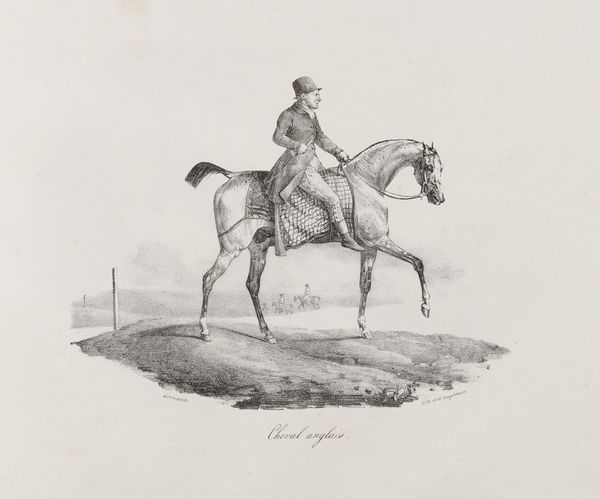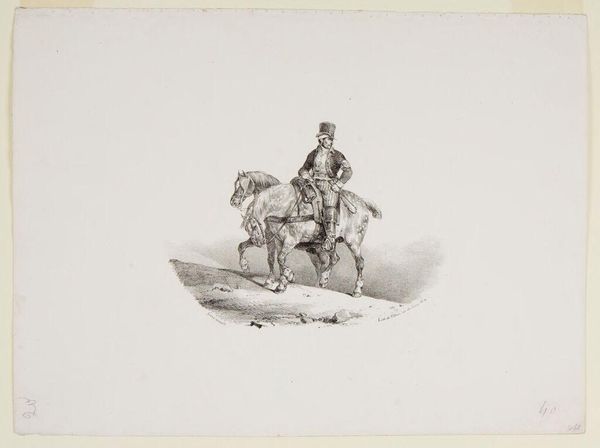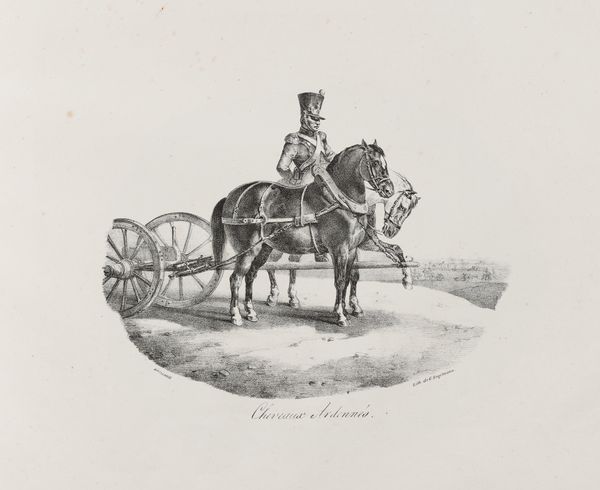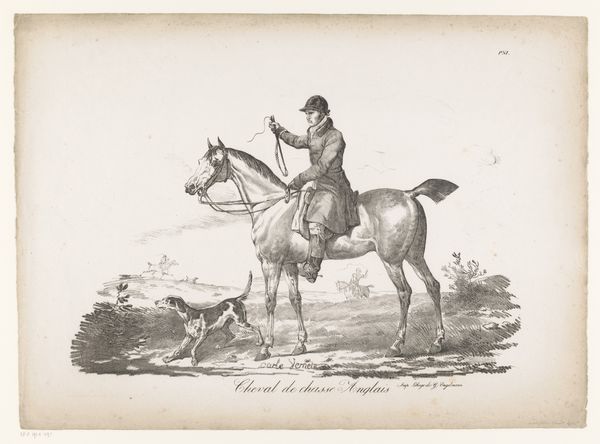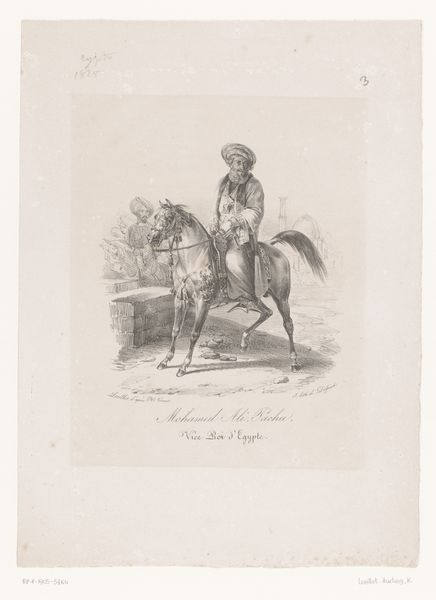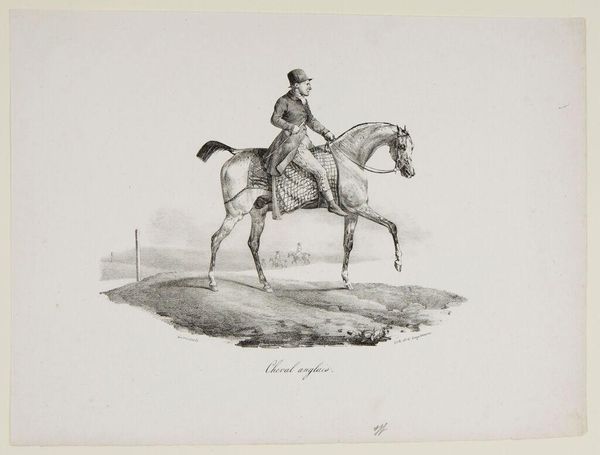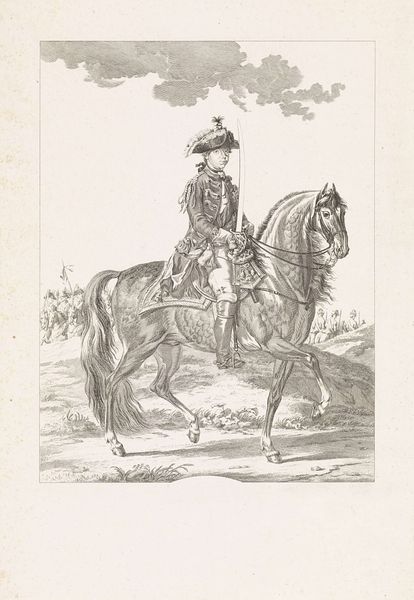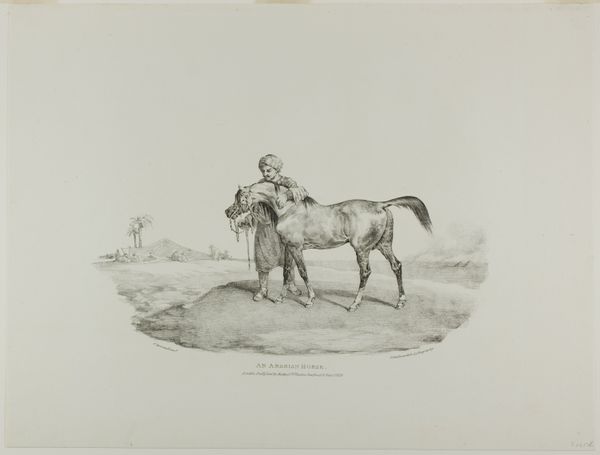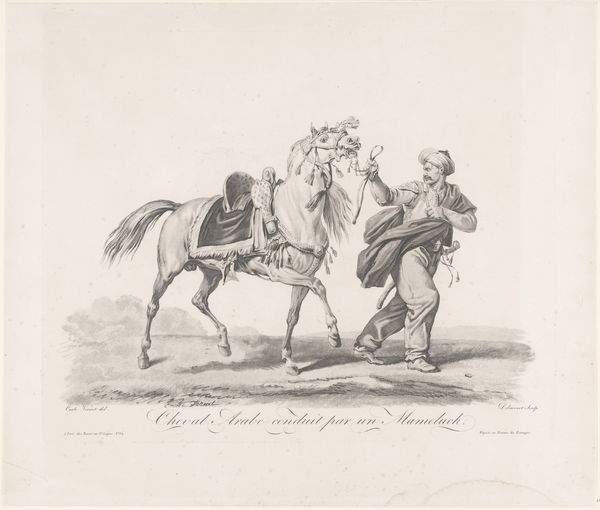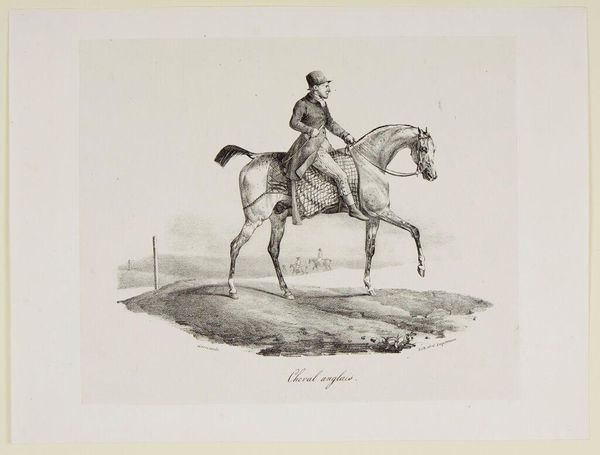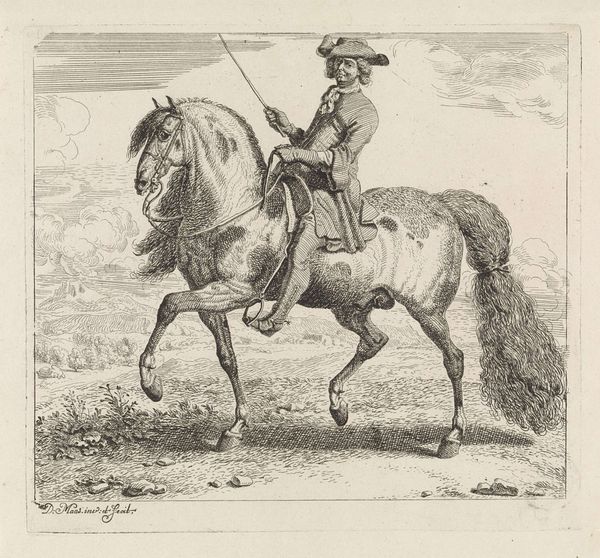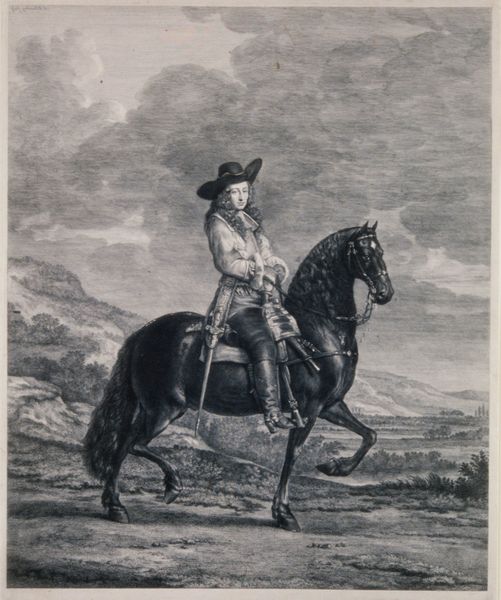
lithograph, print
#
portrait
#
lithograph
# print
#
landscape
#
romanticism
#
france
#
history-painting
Dimensions: 5 x 7 in. (12.7 x 17.78 cm) (image)
Copyright: Public Domain
Curator: Here we have Théodore Géricault’s lithograph from 1823, "Un Postillon," currently residing at the Minneapolis Institute of Art. Editor: Oh, a striking tableau. The landscape feels both sparse and imposing, dwarfing the rider on horseback, making me think of loneliness and journeying. Curator: The composition leverages a dynamic asymmetry, focusing our gaze on the postilion and his team as they traverse a rugged terrain. The lines, rendered with acute precision, delineate form and texture—observe the meticulous hatching that sculpts the musculature of the horses and the details of the postilion's attire. Editor: Absolutely. You can almost hear the clip-clop of hooves echoing through the barren scene. There's this underlying tension—a quiet before a storm perhaps. Is this landscape real, or more of a state of mind, an allegory? Curator: Géricault, steeped in Romanticism, was fascinated by psychological states and human struggles, aligning "Un Postillon" with the period's emphasis on emotion. Editor: That explains the palpable sense of unease. It's not just a simple portrait, it's layered with emotional weight. He is the picture of determination on a long and challenging journey. I’m getting vibes of man vs. nature. Curator: Consider also the symbolism inherent in the motif of the postilion, a figure traditionally associated with haste and urgency, which could mirror the turbulent socio-political atmosphere of post-Napoleonic France. The contrast between the controlled posture of the rider and the wild energy of the horses creates visual discord. Editor: Interesting, the control and chaos... I imagine he also used lithography in particular, a medium new at the time, to be innovative. It shows commitment to pushing the boundaries. He sought ways to highlight both raw emotionality, and technical skill. Curator: Precisely, and the inherent qualities of lithography—its capacity for tonal variation and linear exactitude—served Géricault’s expressive purposes. His choices emphasize this work as more than an exercise in technique, but an artistic pursuit. Editor: The mastery certainly speaks volumes. It’s haunting, beautiful and unnerving, all wrapped in one monochromatic print. Thank you! Curator: My pleasure, reflecting on Géricault's approach elucidates so much, bringing us closer to appreciating how the visual aspects contribute to the narrative richness.
Comments
No comments
Be the first to comment and join the conversation on the ultimate creative platform.
